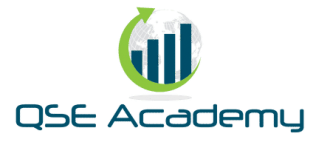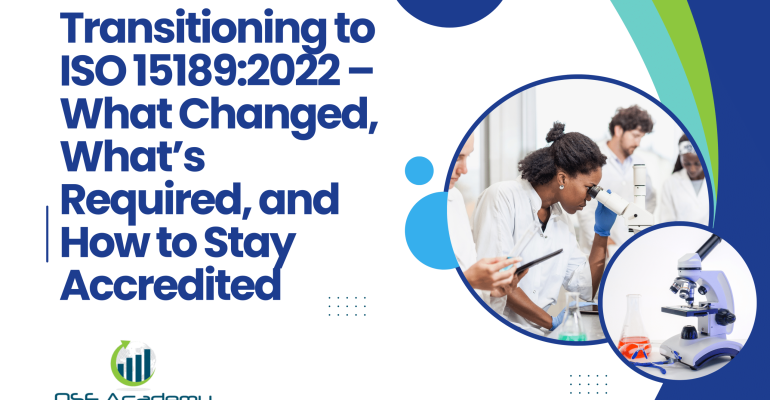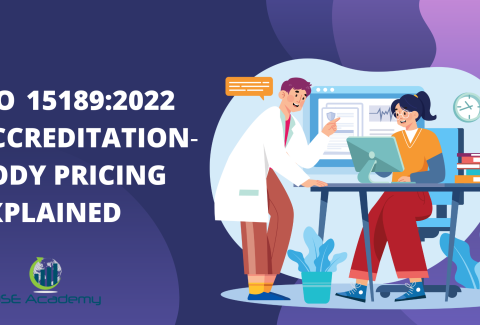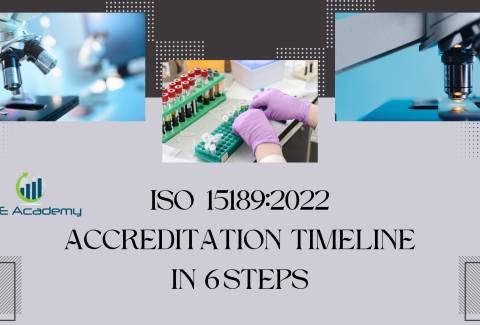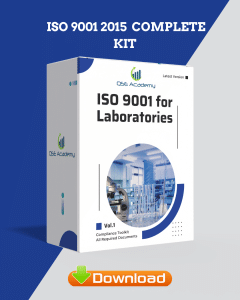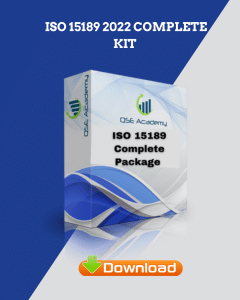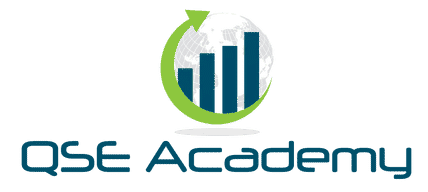Transitioning to ISO 15189:2022 – What Changed.
Last Updated on October 22, 2025 by Hafsa J.
Transitioning to ISO 15189:2022 – What Changed, What’s Required
Let’s be real—transitioning to a new version of an ISO standard can feel like navigating a maze. I’ve been in the trenches of medical lab compliance for over a decade, and every time a standard gets updated, I see the same look on clients’ faces: a mix of confusion, stress, and “Do we really have to change everything?”
Here’s the short answer: no, not everything. But yes, a lot has changed—and those changes matter if you want to keep your accreditation intact and your lab future-proof.
ISO 15189:2022 isn’t just a cosmetic update. This version brings a real shift in mindset, blending in risk-based thinking, updated IT requirements, and a stronger focus on patient care. If you’ve been working with ISO 15189:2012 for years, this update might feel like a curveball. But I’ve guided several labs through this exact transition, and here’s what I’ve learned: if you tackle the right things early—like documentation structure, digital traceability, and staff competence—you’ll stay ahead of the game.
In this article, I’m breaking it all down for you. You’ll learn:
-
What’s actually changed in ISO 15189:2022
-
What the new requirements really mean in practice
-
How to transition smoothly (and keep your accreditation safe)
If you’re a lab manager, quality lead, or accreditation consultant, you’re in the right place. Let’s walk through this together—clear, practical, and no jargon overload.
What’s Changed in ISO 15189:2022?
Here’s what I’ve noticed: a lot of labs expected minor tweaks in this update—maybe a few wording changes or shuffled clauses. But ISO 15189:2022 isn’t just a tidy-up job. It’s a real evolution, and it aligns more closely with standards like ISO/IEC 17025 and ISO 9001.
1. A Risk-Based Mindset is Front and Center
If your lab hasn’t been thinking in terms of “risks and opportunities,” now’s the time to start. The 2022 version wants you to actively identify risks that could impact results or patient safety. It’s not about guessing worst-case scenarios—it’s about consistently asking, “What could go wrong here, and what are we doing about it?”
In my experience, the labs that embrace this approach early actually uncover gaps they didn’t know they had—like outdated SOPs, vulnerable IT systems, or over-reliance on certain staff for critical tasks.
2. Clauses Now Mirror ISO/IEC 17025 and ISO 9001
The new structure is designed to play well with others. If your organization already works with ISO 9001 or 17025, this update will feel a bit more familiar. Think of it like speaking a more universal compliance language across departments.
But heads-up: this also means you’ll need to rethink your documentation layout. A client I worked with had to re-map their entire quality manual to match the new clause numbering—painful at first, but it made cross-functional audits way smoother.
3. Information Systems & Data Integrity Got a Major Upgrade
Let’s talk tech. ISO 15189:2022 expects labs to have better control over their information systems—whether it’s a LIMS, EHR interface, or even spreadsheets. You’ll need to prove that data is secure, traceable, and accurate throughout its lifecycle.
One diagnostic lab I worked with had a solid system on paper—but during the mock audit, we found gaps in version control and user access logs. They tightened it up with simple audit trails and access reviews, and it made all the difference.
What Requirements Are New in ISO 15189:2022?
If you’re scanning the standard and thinking, “This all feels familiar…but slightly different”—you’re not wrong. ISO 15189:2022 didn’t reinvent the wheel, but it did add new spokes. And those new requirements can trip you up if you’re not prepared.
So, let’s unpack what’s new—and what it means for your lab in the real world.
1. The Patient is Finally at the Core
This is a big one. The new version emphasizes something we all should have been doing anyway—putting the patient first.
You’ll now need to demonstrate how every part of your lab’s operations contributes to accurate, reliable, and timely results for patient care. That includes turnaround time, report clarity, and how staff communicate with clinicians.
Real-life example? One of my clients added a patient-focused KPI dashboard. They tracked not just test accuracy, but also delays and clinician feedback. That simple shift helped them catch communication issues early—and it impressed their assessors during their transition audit.
2. More Attention on Competence, Not Just Credentials
Here’s something I see often: labs relying too heavily on degrees and certificates as proof of staff qualification. ISO 15189:2022 wants more.
Now, you’ve got to prove that your team is competent in context. That means documented skills assessments, observed performance, and targeted training—especially when new equipment, tests, or systems roll out.
Pro Tip: Use a competence matrix. I helped a regional blood lab build one, and it helped them spot exactly where cross-training was needed before a key technologist went on leave.
3. IT Systems: Now a Compliance Priority
If your LIMS used to fly under the radar during audits, not anymore. ISO 15189:2022 now treats your information systems like any other part of the quality process.
You’ll need to show:
-
Data access is controlled
-
Audit trails are in place
-
Validation is documented for software updates
-
Backups are regular and secure
It’s no longer acceptable to shrug and say, “IT handles that.” You, as the lab leadership, are accountable.
Transition Timelines and Accreditation Deadlines
Now that we’ve covered what’s changed and what’s new, let’s talk timing—because this is where a lot of labs get caught off guard.
When Does ISO 15189:2022 Take Full Effect?
The International Accreditation Forum (IAF) has outlined a three-year transition period starting from December 2022. That means by the end of 2025, every lab accredited to ISO 15189:2012 needs to have successfully transitioned to the 2022 version.
Sounds like plenty of time, right?
In my experience, it flies by. Labs that delay the process until the final year end up under serious pressure—rushing documentation updates, scrambling to train staff, and risking preventable nonconformities.
Here’s What You Should Be Doing Now
Year One (Start Immediately):
-
Conduct a detailed gap analysis
-
Map out changes using a clause-by-clause comparison
-
Begin updating documentation structure
Year Two:
-
Revise your risk assessments and IT system validations
-
Deliver targeted training to staff on the updated standard
-
Run internal audits aligned with ISO 15189:2022
Year Three:
-
Schedule your reassessment or surveillance audit with your accreditation body
-
Fix any issues uncovered during your internal audits
-
Finalize your evidence and prepare for a smooth transition
What If You Miss the Deadline?
To put it plainly—you could lose your accreditation.
I’ve seen it happen. One client assumed they could “fix things later.” They delayed LIMS validations and skipped updating their competency records. When their accreditor came in, they received multiple nonconformities and were forced into corrective action under tight deadlines. Their team was exhausted, and the process cost them far more than it should have.
Avoiding that situation starts with action—now.
Pro Tips & Insider Insights to Smooth Your Transition
Pro Tip #1: Assign a Transition Champion Early
In my experience, the most successful transitions happen when there’s one person clearly responsible—not five people “kind of” managing things.
Appoint a transition lead. Give them the time and authority to coordinate documentation updates, track training, and keep the team aligned. When one diagnostic lab I worked with did this, they shaved months off their transition time and avoided duplication across departments.
Pro Tip #2: Use a Clause-Mapping Matrix to Stay on Track
Don’t rely on memory or margin notes in the standard. Create a simple spreadsheet that lists each clause from the 2022 version, what’s changed, and how your lab currently meets—or doesn’t meet—it.
One of my clients used color codes (green = compliant, yellow = needs update, red = gap) to run weekly status checks. It kept the whole team focused and made their transition audit almost painless.
Pro Tip #3: Document Your IT Validation Process—Even If It’s Basic
Many labs assume their LIMS or digital systems are “covered” because IT handles them. But ISO 15189:2022 is very clear—you need to show how your systems were validated, how updates are tested, and how you ensure data integrity.
You don’t need a 200-page report. Even a short validation summary with screenshots and backup logs can show auditors you’re in control. I’ve seen labs avoid major findings just by having those ready during their audit.
Pro Tip #4: Tie Risk Assessments to Real Lab Activities
Generic risk registers won’t cut it anymore. You need to show how risks are identified in context—during test method changes, new staff onboarding, or equipment installation.
Here’s what worked well for one lab: after every nonconformance or incident, they added a “risk tag” and logged how the issue was assessed and addressed. That habit not only improved their system—it became a strength in their audit.
Common Mistakes to Avoid and Questions Labs Keep Asking
No matter how experienced the team, certain issues pop up again and again during ISO 15189 transitions. I’ve seen these missteps happen in labs of all sizes—from small private facilities to large national hospitals.
Here’s what to watch out for—and the answers to the questions I get most from lab managers and quality leads.
Top 3 Mistakes That Can Delay Your Transition
1. Treating It Like a Paperwork Update
Let’s be honest—just changing the title on your quality manual from “2012” to “2022” won’t cut it. I’ve walked into too many labs where the documents looked fine on the surface, but nothing had changed in practice.
This update isn’t cosmetic. It requires a mindset shift—especially around risk, competence, and system oversight.
2. Underestimating IT Requirements
Many labs think IT systems are the vendor’s problem. But under ISO 15189:2022, you are responsible for showing your systems are validated, secure, and traceable.
Skipping this is one of the fastest ways to rack up nonconformities.
3. Assuming Qualified = Competent
Degrees and licenses are great—but they’re not enough. The standard wants actual proof that people can do the tasks they’re assigned to, with up-to-date training and performance monitoring.
I’ve seen senior staff caught off guard when asked to show evidence of recent method evaluations or ongoing proficiency testing.
Frequently Asked Questions (Real Ones from Real Labs)
Q1: Can We Keep Our Existing Procedures and Just Add a “2022” Label?
Short answer: No.
If your current documents still follow the 2012 clause structure, you’ll need to revise them to align with the new framework. More importantly, you’ll need to update how you do things—not just how you write them down.
Q2: Is There a Grace Period If We Can’t Fully Transition by the Deadline?
Not really.
Your accrediting body might allow some flexibility in how you demonstrate compliance—but not when. The official transition deadline is firm, and missing it can jeopardize your accreditation.
Start your prep well in advance. I always recommend aiming to transition at least six months before the final deadline to leave room for internal audits and corrective actions.
Q3: How Do We Prove Risk-Based Thinking Without Overcomplicating It?
It doesn’t need to be a huge system. I often suggest starting with simple tools like risk registers, incident logs, and change-control forms with risk checkboxes.
One lab I worked with added a “risk review” step to every SOP update process—and that alone helped them meet the requirement without needing a separate workflow.
You’re Not Behind—But Don’t Wait Any Longer
Let’s bring it all together.
ISO 15189:2022 isn’t just about new documentation—it’s about strengthening how your lab works, proves competence, manages risk, and protects patient outcomes. If you’ve been relying on the 2012 version for years, this transition might feel like a big lift. But here’s what I’ve seen firsthand: the labs that get started early, communicate clearly with their teams, and focus on smart, practical updates—not perfection—come out ahead.
So if you’re feeling overwhelmed, take a breath. You’re not behind. But the time to act is now.
Start with a gap analysis. Pick one system—maybe your training program or LIMS validation—and tackle that first. Break it down. Don’t try to do everything at once.
And if you need help, don’t guess your way through it. There are tools, checklists, and people (like me) who’ve helped labs through this transition more times than we can count.
Whether it’s ISO 9001, ISO 22000, or the cosmetics-focused ISO 22716, I’ve spent my career I’m not here to call myself an expert—I prefer “enthusiast” because I truly love what I do. When I’m not writing about standards, you’ll probably find me playing Piano 🎹, connecting with people, or diving into my next big project💫. I’m an engineer specialized in the food and agricultural industry
make ISO standards less intimidating and more approachable for everyone.
turning complex jargon into clear, actionable steps that businesses can actually use.
There’s something incredibly rewarding about helping people navigate food safety and quality management systems
in a way that feels simple, practical, and even enjoyable.
I have a Master’s in QHSE management and over 12 years of experience as a Quality Manager
I’ve helped more than 15 companies implement ISO 9001, ISO 22000, ISO 22716, GMP, and other standards
My clients include food producers, cosmetics manufacturers, laboratories, and service companies
I believe quality systems should be simple, useful, and efficient.
